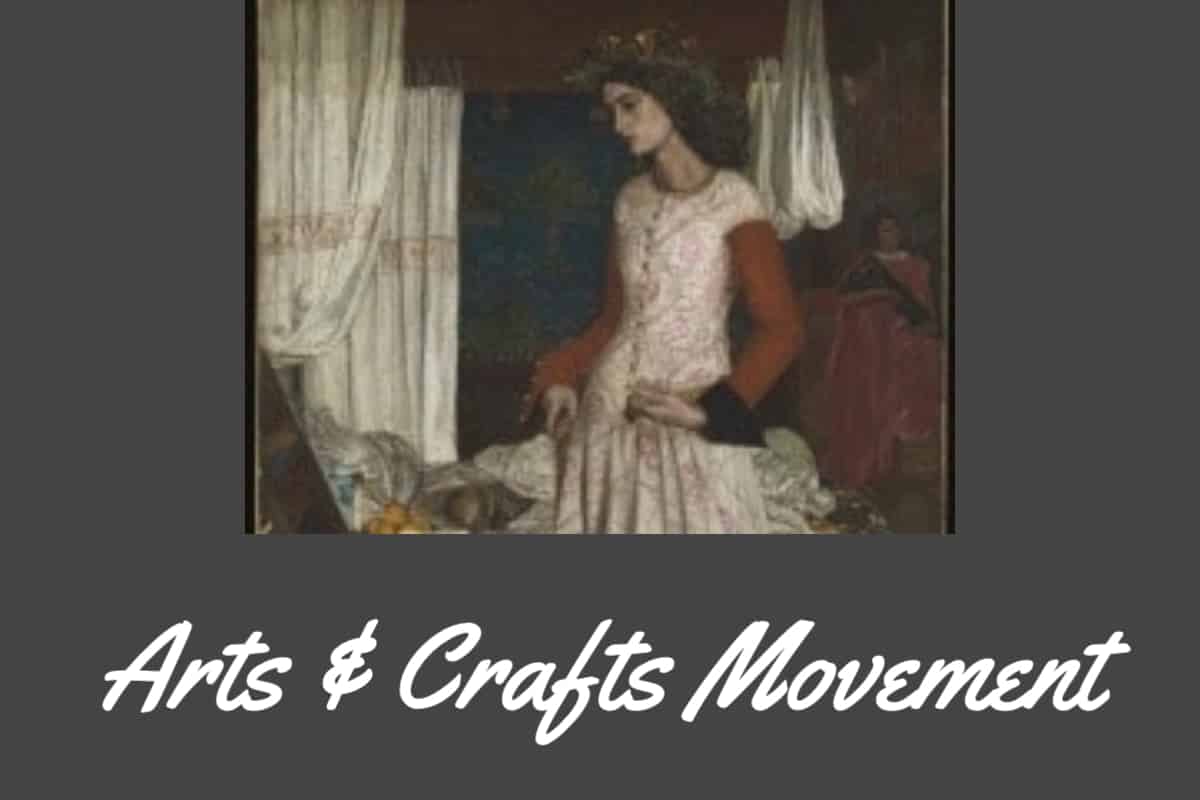During the arts and crafts movement, there was a lot of change and different artistic movements taking place. For this reason, it can be confusing as to what are the characteristics of the Arts and Crafts Movement.
The Arts and Crafts movement started in Britain and swept over Europe and the United States. The movement became famous and very influential in the late 19th century and changed how many artists worldwide viewed their art. It also changed how artists saw the design of their artwork, buildings, fabrics, wallpaper, parks, cities, and objects in their homes and offices.
Table of Contents
- About the Arts and Crafts Movement
- The Characteristics of the Arts and Crafts Movement
- 11 Reasons Why I Believe the Arts and Crafts Movement is Profoundly Important
- Frequently Asked Questions
- Related Questions
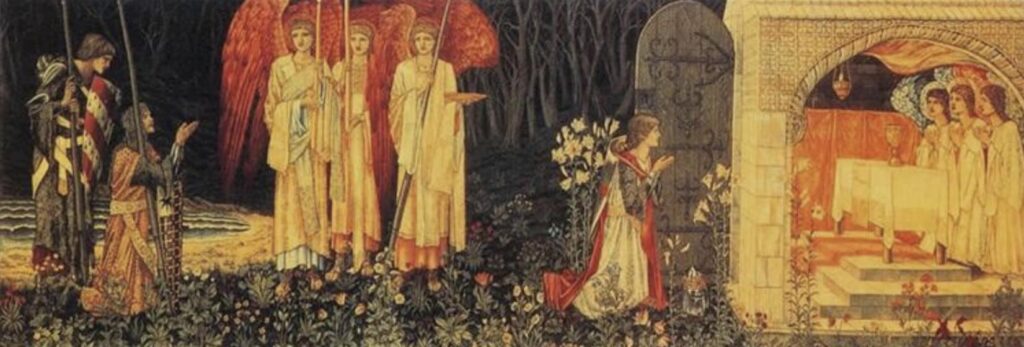
About the Arts and Crafts Movement
The Arts and Crafts movement was an international art trend in the decorative and fine arts that began in Britain and then swept over Europe and America. The time period of the movement was from about 1880 to 1920. It also emerged in Japan in the 1920s under what is known as the Mingei movement.
Key Personalities of the Arts And Crafts Movement
The Arts and Crafts movement was shaped and defined by several key figures who played pivotal roles in its development.
Some of the key personalities who inspired the Arts and Craft Movement include:
William Morris (1834-1896) –
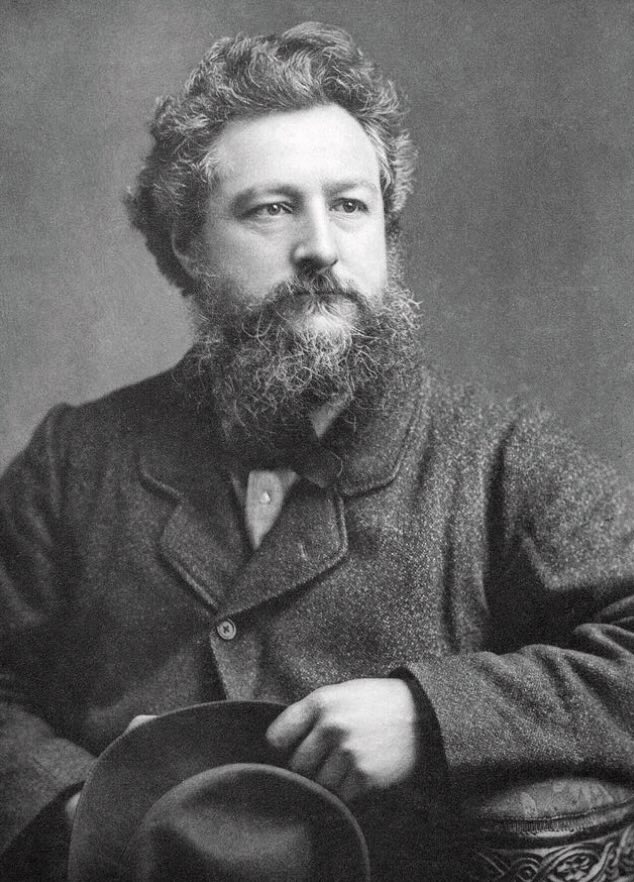
Morris is perhaps one of the most influential people in the arts and crafts movement. He was a British textile designer, poet, novelist, translator, painter, and social activist.
He was a major contributor to the revival of the traditional British textile arts and textile production methods. He played a significant role in the early socialist movement in Britain.
Augustus Welby Northmore Pugin (1812-1852) –
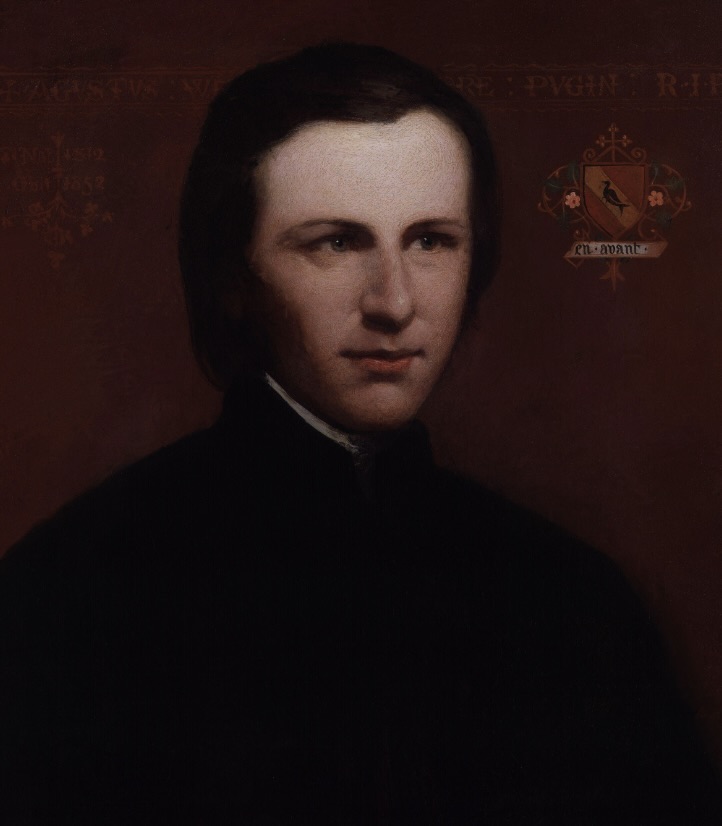
Pugin was an English architect, designer, artist, and critic remembered for his Gothic revival style of architecture. He is known for having designed the interior of the Palace of Westminster in Westminster, London.
He is the architect of the Elizabeth Bell Tower, which houses the iconic Big Ben bell.
John Ruskin (1819 – 1900) –
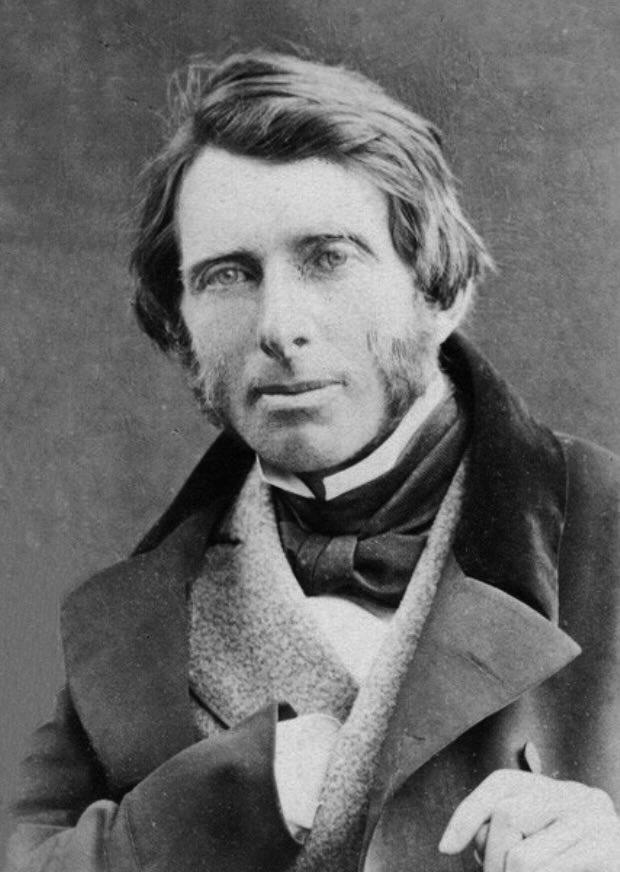
Ruskin was a leading art critic, art patron, draftsman, and watercolorist. He was a prominent social thinker and philanthropist of his day. He wrote Modern Painters, an essay that was in defense of the painter J.M. W. Turner, in which he argued that the principal work of an artist was to be true to nature.
He championed the pre-raphaelite movement that was influenced by his ideas. He founded the Guild of St George, a charitable education trust still active today.
The arts and crafts movement started in Britain and then spread to the British Isles and then onto Europe and America. It was considered a reaction to the decorative arts movement of the time.
The Arts and Crafts movement was about reforming the design and decoration of mid-19th century Britain.
There was an exhibition in Britain at Hyde Park called the Great Exhibition in 1851. It was considered one of the first World’s Fairs. Critiquing the items that many of these reformers and thinkers saw at this exhibition helped drive the arts and crafts. The reformers felt the items they saw at the Great Exhibition were ornate, artificial, and ignorant of the quality of the materials they are were using them for.
E.C. Ralph in his book The Urban Modern Landscape: 1880 to the Present said this of William Morris and the Arts and Craft Movement:
“William Morris, for instance, pleaded for simplicity of designs, a cleaning out of all sham, waste and self indulgence, especially in decorative arts. He thought that this might be achieved by combining the skills of artists and craftsmen to create a simple yet popular art; practicing as he preached he designed and produced wallpapers and fabrics and established a hand printing press. These practical demonstration soon acquired a following known as the Arts and Crafts Movement which sought to revive decorative honesty and sound workmanship in manufacturing and building.”
E.C. Ralph
This movement started to become both popular and very influential and changed how many artists worldwide viewed their art.
In summing up his feelings of art and design, William Morris said
“Apart from the desire to produce beautiful things, the leading passion of my life has been and is a hatred of modern civilization.”
William Morris
The Arts and Crafts Movement was not linked just to the arts; it also had political views. Many of the movement’s essential figures were also part of the early Socialist movement and socialist thinking in Britain.
This is why the Arts and Craft Movement covers such a broad spectrum of designs and ideas. It was a design movement, a political movement, and philosophy. It was a movement that would encompass many kinds of styles.
In speaking of this, Stephanie Przybylek, in her Humanities Course, said:
“Because the Arts and Crafts Movement was as much about a reform philosophy as it was a specific type of design, there isn’t a single set of unifying traits that identify Arts and Crafts works.”
Stephanie Przybylek
The Characteristics of the Arts and Crafts Movement
Since there is no single set of unifying traits that can characterize the Arts and Crafts movement, it was a movement that changed the way that people saw a design for artwork, buildings, fabrics, wallpaper, parks, cities, and objects in their homes and offices. It was a movement that swept over the entire world.
Here are the Characteristics of the Arts and Crafts Movement:
- The belief is that beautiful and well-made objects and things should surround a person.
- Craftsmanship should stress the inherent natural beauty of the materials being used.
- Use of high-quality materials but not overly complicated designs.
- The Arts and Crafts movement borrowed inspiration from a variety of places. One was from medieval art, especially the Gothic and Celtic. Japanese art was also focused on its linear quality and the flattened sense of space and form. Islamic art inspired the movement with its ornament and patterned surfaces.
- The Arts and Crafts Movement received inspiration in nature and focused on nature but in a simplified and stylized way.
- Patterns tended to be rectilinear or moving in a straight line or lines but could also include curved lines.
- I took inspiration from nature in many patterns with stylized and simplified flowers, vines, leaves, birds, insects, or animals.
- Many colors used were natural tones, such as deep green, browns, rich reddish terra cottas, and similar earth tones.
- Value simplicity, utility, and beauty in design, form, and function.
- The Arts and Crafts movement also believed that the designer was the craftsman.
The Arts and Crafts Movement was a significant movement that influenced a lot of art, design, building, and city planning. Today, you can still see the Arts and Craft Movement’s influence in arts, design, and architecture.
11 Reasons Why I Believe the Arts and Crafts Movement is Profoundly Important
We love the arts and crafts movement. Here are eleven reasons why we consider it a significant art movement,.
- Personal Connection: For me, the Arts and Crafts movement isn’t just an art movement; it’s a testament to the value of handcrafted pieces. Whenever I encounter an item from this era, I feel an intimate connection with the maker, a sensation often missing from mass-produced goods.
- Rebellion against Industrialization: I deeply admire how the movement was a brave stand against the rapid industrialization of the 19th century. It reminds me of the need to step back and cherish the human touch in our creations.
- Holistic Approach: The fact that the movement wasn’t just about art but also incorporated architecture, interior design, and even town planning makes me appreciate its comprehensive and inclusive nature.
- Emphasis on Craftsmanship: I’ve always believed in the value of meticulous craftsmanship, and this movement solidified that belief. The dedication to perfecting a craft speaks to me about passion and commitment.
- A Return to Nature: Living in an increasingly urbanized world, I find solace in the movement’s emphasis on nature and organic motifs. It reminds me of the simple beauty that surrounds us.
- Promotion of Individual Creativity: I love how the movement empowered individual artists and craftsmen. It tells me that every person, every hand that creates, holds value.
- Societal Impact: The movement, for me, wasn’t just about art. It represented a societal shift, advocating for better working conditions and emphasizing the moral value of creative work. This resonates with my belief in art’s power to drive change.
- Timeless Designs: Every time I come across designs from the Arts and Crafts movement, I’m struck by their timeless appeal. They remind me that true beauty transcends eras.
- Integration of Function and Form: I sincerely appreciate aesthetically pleasing and functional art. The movement’s emphasis on combining utility with beauty speaks to my practical side.
- Collaborative Spirit: I’ve always believed in the power of collaboration, and the movement showcased this brilliantly. Artists, architects, and designers came together, reminding me that collective efforts often yield the most profound results.
- Empowerment of the Domestic Sphere: The movement brought art into homes, making everyday environments beautiful. For someone like me, who believes in the sanctity of personal spaces, this aspect is particularly heartwarming.
In essence, the Arts and Crafts movement isn’t just another chapter in the history of art for me. It’s a personal testament to the enduring value of craftsmanship, the beauty of nature, and the profound impact of collaborative creativity.
Anita Louise Art is dedicated to art education, great artists, and inspiring others to find and create their art. We love art that uplifts and inspires. #ArtToMakeYouSmile! #ArtToMakeYouHappy!
If you want to see any of my art, you can find out more by clicking here. If you are interested in what inspires me and my paintings, you can discover more by clicking here.
We have a free newsletter and would love you to be part of our community; you can subscribe to the newsletter by clicking here. If you have any questions, I would be happy to talk to you anytime. You can reach me, Anita, by clicking here.
Subscribe to our Anita Louise Art YouTube Channel with great videos and information by clicking here.
Frequently Asked Questions
What is the Arts and Crafts Movement?
The Arts and Crafts Movement was a late 19th-century artistic and design movement that emerged in Britain and later spread to Europe and the United States. It aimed to counter the negative impacts of industrialization by promoting craftsmanship, traditional techniques, and a return to simplicity and quality in design.
What were the main goals of the Arts and Crafts Movement?
The movement sought to revive traditional craftsmanship, emphasize the importance of the handmade, and reject mass production. It aimed to bring art into everyday life and to create a more harmonious and aesthetically pleasing environment.
How did the Arts and Crafts Movement view industrialization?
The movement was critical of the negative effects of industrialization, such as the loss of craftsmanship, poor working conditions, and the prevalence of mass-produced, poorly designed goods. Advocates sought a return to handcrafted, high-quality items.
What are the key design principles of the Arts and Crafts Movement?
The movement valued simplicity, honesty in materials, functionality, and a connection between form and function. Designs often featured clean lines, natural materials, and a rejection of unnecessary ornamentation.
Who were some prominent figures associated with the Arts and Crafts Movement?
Key figures include William Morris, John Ruskin, and Charles Rennie Mackintosh. William Morris, in particular, was a leading figure whose writings and designs greatly influenced the movement.
How did the Arts and Crafts Movement impact architecture?
In architecture, the movement led to a preference for traditional building methods and styles, emphasizing craftsmanship and rejecting overly ornate or artificial decoration. There was a focus on creating buildings that blended with their natural surroundings.
What role did the Arts and Crafts Movement play in the decorative arts?
The movement had a significant impact on the decorative arts, influencing the design of furniture, textiles, ceramics, and stained glass. Craftsmen and designers aimed to create functional and beautiful objects that reflected the ideals of the movement.
Did the Arts and Crafts Movement have social and political implications?
Yes, the movement had social and political undertones. It advocated for fair labor practices, improved working conditions, and the idea that well-designed, handcrafted goods should be accessible to a broader audience, not just the wealthy elite.
How did the Arts and Crafts Movement influence urban planning and design?
The movement influenced urban planning by promoting the idea of creating aesthetically pleasing, functional cities with green spaces and well-designed public buildings. It sought to improve the overall quality of life by incorporating artistic principles into the urban environment.
Is the legacy of the Arts and Crafts Movement still evident today?
Yes, the movement’s influence can still be seen in contemporary design and architecture that values craftsmanship, simplicity, and a connection to nature. Many elements of Arts and Crafts design continue to inspire artists, architects, and designers in the present day.
Related Questions
Where Can I See Some Frank Lloyd Wright Houses?
Nestled away on West Burnham Street in Milwaukee. Wisconsin is a hidden jewel of Frank Lloyd Wright’s architecture. One block of West Burnham street has some duplexes, and houses were all designed by Frank Lloyd Wright, specifically for the working classes of the time. Today, all those structures on West Burnham Street in Milwaukee are still a testimony to this great architect.
Frank Lloyd Wright is considered one of America’s finest architects. Even today, his work is being studied and analyzed. One of his favorite projects was to build some small houses that would be comfortable yet affordable. This project was called the American System-Built Homes. Frank Lloyd Wright gave the exclusive rights to Arthur L Richards for the construction of these homes. Several of these homes were built around the midwestern United States. Unfortunately, the project did not last long, but Milwaukee, Wisconsin, has one block of these homes still standing. The homes are being restored and cared for. You can take a tour of these homes on West Burnham Avenue in Milwaukee, Wisconsin.
You can read more by checking out the blog Frank Lloyd Wright’s American System-Built West Burnham Street Homes by clicking here.
Who is the Artist Carl Heinrich Bloch?
One of Denmark’s greatest artists, Carl Bloch, almost did not become an artist. His parents wanted him to join the Navy, but he was consumed with art and proved early in life to be artistically gifted. Throughout his life, he painted many important paintings. One of his most important art commissions was to paint 23 scenes from the life of Christ at the Fredriksborg Castle in Denmark. Later in life, he became a very skilled printmaker. Carl Bloch was married and had eight children. Both Carl and his wife Alma died quite young.
You can read more about Carl Bloch by reading our blog entitled 18 Facts About The Artist Carl Heinrich Bloch (1834 – 1890) by clicking here.

